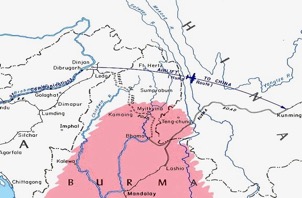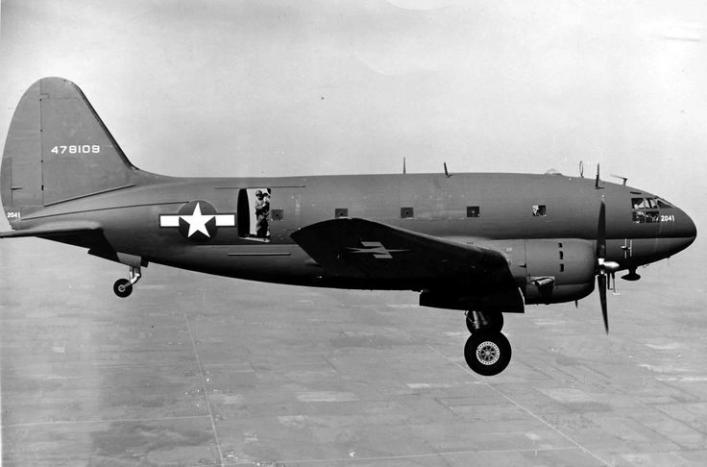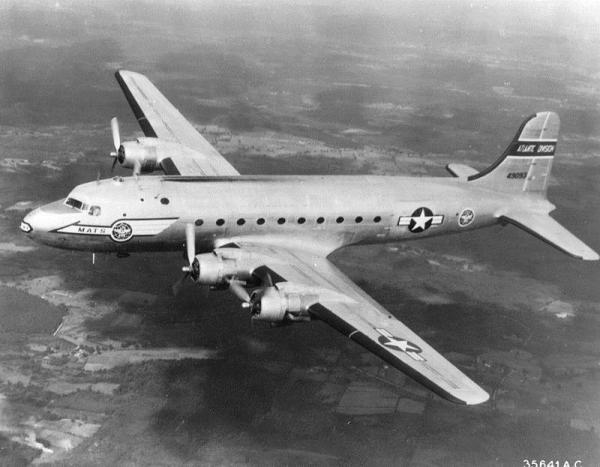
US military efforts in China, Burma and India (CBI) are some of the lesser known episodes of World War II.
Loss estimates vary between 468 and 600 plus airplanes along with 1,314 crewmen. Some 1,171 men who after surviving crash landings and bailouts walked out to safety; 345 men were declared missing.
Monitoring Desk
A Report by Lyon Air Museum
US military efforts in China, Burma and India (CBI) are some of the lesser known episodes of World War II, despite the heroics and the colorful combat units and personalities involved. To support CBI efforts tons of military supplies were transported from India “Over the Hump” to China by brave aircrews flying C-47 and other aircraft. Lyon Air Museum has two C-47 transports (one configured as a DC-3) on display. Two new exhibits on the Air War in the Pacific, which include a description of Hump operations, recently opened. This article includes real-life experiences from three living Hump veterans, some of the almost forgotten heroes of World War II.
During its time, Hump Operations carried more tons of cargo over a given route than any other aviation operation since the Wright brothers’ flight at Kitty Hawk. More planes and more cargo were flown in Hump Operations than any civilian airline in the world at that time, and it flew them over the most rugged mountain terrain in the world. It did so with a fraction of any near rival’s service and maintenance facilities. Its operational losses, which were higher than those of any other noncombatant aviation unit in World War II, exceeded those of many combat units. It flew unarmed during the most dangerous days, through marauding Japanese airpower. It carried the preciously needed cargo eastward during every hour of the day and night, in the worst of weather.
America’s Role in the CBI
Officially established June 22, 1942, the China-Burma-India Theater (CBI) is often referred to as The Forgotten Theater of World War II. Of the Americans under arms at the height of World War II mobilization, only about 250,000 (two percent) were assigned to the CBI Theater, making “CBI Veterans are Unique” more than just a slogan.
Thousands of men—mostly boys, really—were assigned to US Army Air Force (USAAF) units serving in the CBI theater of war. The Air Transport Command flew supplies Over the Hump from India to China. The 341st Bomb Group sought to destroy Japanese facilities and supply routes and the Flying Tigers fought Japanese in the air over China and Burma. Also supporting the effort were Merrill’s Marauders and the Mars Task Force—the only dedicated US ground fighting forces in the Theater—who fought through the jungles of Burma. And, Army Engineers built the Burma-Ledo Road to open up a land supply route.
These men served their country well! They overcame the hardships, accepted the sacrifices, and performed their duties with courage and skill. In spite of their youth and naivetéé, and despite the isolation of being half-way-round the world from those they had vowed to protect, each of them accepted that Freedom is worth fighting, and perhaps dying for! Their outstanding accomplishments in, arguably, one of the most difficult theaters of the war, emphasize the courage, dedication and ingenuity of all the World War II veterans who defended an ideal and our way of life.

Supply Routes to China
The phrases, Burma Road and The Hump, actually describe three different truck-convoy ground transportation systems and one airborne transportation route. They all served the same purpose: to deliver large quantities of British and American supplies into western China in support of the Nationalist Chinese and Allied forces.
The loss of the Burma Road in 1942 to the Japanese necessitated a hasty arrangement to fly the supplies from airfields in the Assam Province, India, to Kunming, China. From there the supplies were trucked or flown to Chungking. The United States determined that a continuous flow of military supplies into China had to continue to enable the Chinese Army, the U. S. Army 14th Air Force and the China Air Task Force to remain effective and keep pressure on Japanese occupation troops, thereby denying their use as fighting forces in other parts of the CBI or south Pacific.
The first supply mission over The Hump occurred in April 1942, when the U. S. Army 10th Air Force in India contracted with the African Division of Pan-American Airways to handle the transport of 30,000 gallons of gasoline and 500 gallons of lubricants to China for use by the B-25s of the Doolittle Raiders. (The Doolittle Raiders had expected to refuel in China after their April raid on Tokyo. Unfortunately, they were forced to launch early from the aircraft carrier Hornet, and were not able to reach the refueling bases in China).
Regular Hump operations began in May 1942 with twenty-seven aircraft (converted US airline DC-3s, C-39s and C-53s) and approximately 1,100 personnel from New Malir Air Base, a British base located in the Sind Desert about twenty miles east of Karachi in western India.
The air routes went over the eastern part of the Himalayan Mountains and so the route became known to the pilots as “The Hump.” This operation was the first sustained, long range, twenty-four hours around-the-clock, all weather military aerial supply line in history. It was a start-from-scratch operation. There was no precedent for it. Even with the opening of an alternate ground route in early 1945, The Hump remained the principal supply route until after the war ended.
The Hump route was an unlikely route for regular flight operations due to high terrain and extremely severe weather. It crossed a north-south extension of the main Himalaya Mountains that ran south through northern Burma and western China. On the very north end of the extension, terrain exceeded 20,000 feet in height. Average elevations lowered to the south but did not fall below 12,000 feet for approximately one-hundred-forty miles. The routes flown fell between these two extremes.
The Hump initially contained few en-route navigational aids. En-route communications were poor, and air traffic control, except for local control towers, did not exist. Aeronautical charts were very unreliable and weather reporting was very poor. These conditions slowly improved after the arrival of the U. S. Army Airways Communications Service (AACS) in August 1943.
Homing beacons existed at each airfield in India and China. These homers were severely affected by weather, night effect, and static electricity that built up on aircraft. Landing approaches were flown on instruments using the airport’s homing beacons for guidance.
In addition to navigation difficulties, there was always the danger of being intercepted by Japanese fighters since Japan controlled most of the coastline of China.
The Weather
Can anyone envision flying through a monsoon rainstorm over the Himalaya Mountains in a heavily-loaded, unpressurized, two-propeller airplane? “It was like you were flying through a bucket of water,” remembers Lt. Jay Vinyard, one of the China-Burma-India Hump C-46 pilots of World War II. “They send you over there to see what you are made of.”
Danger wasn’t only from Japanese combat planes but from bad weather. Severe weather existed on the Hump almost year around. The monsoon season, with heavy cloudiness, fierce rain, and embedded severe thunderstorms with turbulence severe enough to damage aircraft, existed from around May into October. The late fall and winter flying weather was better with many VFR (visual flight rules) days. However, heavy ground fogs, with ground visibilities down to zero-zero, occurred almost nightly during the early winter, and severe thunderstorms still occurred over the route on an irregular basis. Winter winds aloft were extreme, often exceeding one-hundred mph. Most night flying had to be done solely using cockpit instruments from takeoff, due to lack of any ground or horizon references, until well into western China.
The January 6-7, 1945 storm was extremely unusual and quite violent. It took everyone by complete surprise. Immediately after takeoff on January 6, 1945, Lt. Carl Constein and his crew on flight 634 from Chabua, India to Kunming, China, flew into the brunt of this severe storm. Throughout the 500-mile flight they confronted severe turbulence, icing, strong downdrafts, steady westerly wind speeds over one hundred miles per hour, thunder and lighting, and monsoon rain. Maintaining control of the airplane was hard enough. The storm rendered radio navigation virtually useless making it very difficult to determine position and to stay on course to Kunming. The weather was so bad that the crew expected to overnight in Kunming. After landing, the operations officer informed them they and everyone else would have to make the return trip to India—overnight stays were not authorized. Planes were dispatched in spite of bad weather following the “no weather” proclamation issued in December 1943: The Hump is never closed. Soon after becoming airborne the full fury of the storm became real once again. For the next four hours, flight 634 replayed the harrowing just completed flight.
Lt. Jay Vinyard recounts, “The trip over was rough and we were without navigational guidance for over half the trip…we went on time and headings. On one leg I corrected for a 125 miles per hour crosswind from the southwest that turned out to be not enough correction. But we survived that and finally got to Kunming. I apparently was the last flight in before The Hump had been officially closed for the night.”
January 6-7 was purported to be the worst two-day’s loss due to bad weather anywhere in the world. Thirteen and most likely fifteen airplanes and their aircrews were lost.

The Aircraft
Initially the Hump was flown with converted Douglas DC-3, C-39, C-53 and military Douglas C-47 aircraft. Loads over the Hump grew slowly until the arrival of Consolidated C-87s (converted B-24s) in December 1942 and the Curtiss C-46 in April 1943. The C-46 was a large super-charged twin-engine aircraft capable of flying faster, higher and carrying heavier loads than the C-47. The C-87, and its C-109 tanker modification, were supercharged four-engine aircraft capable of flying higher and faster but with smaller loads than the C-46.
With these airplanes, loads over The Hump reached 12,594 tons in December 1943. Douglas C-54 Skymasters were added to the inventory in February 1944. The Skymaster was the militarized version of the DC-4; the first large, four-engine American airliner, it had the cargo volume of a railroad boxcar. The C-54 carried ten tons of supplies—five times the cargo load of the C-47 and twice that of the C-46. The C-54 didn’t have the high-altitude performance to fly the “High Hump” routes but, in May 1944, British and American forces captured the Japanese fighter strip at Myitkyina, thus eliminating any opportunity for the Japanese to interdict the less extreme “Low Hump” routes. The C-54 was also safer than its four-engine predecessor, the Liberator Express, and its tanker version whose accident rate was 500 percent higher than the C-54’s.
Personnel Living Conditions
Living conditions in the Assam Valley were primitive. Personnel generally lived in tents or bamboo bashas. A few lived in tea plantation bungalows or in bungalow outbuildings. During the monsoon season bases were seas of mud. Sidewalks and tent foundations had to be elevated to stay above standing water. Temperatures during the monsoon season were extremely hot with very high humidity. Clothes and shoes mildewed within days. Food was government issued C-rations. Personnel did not eat off base for sanitary reasons. Malaria and dysentery were prevalent diseases. Water could be consumed only after purification by iodine.
Initially, Hump pilots were allowed to rotate home after logging six-hundred-fifty hours. A typical flight took about three hours in good weather. When Japanese planes were at their most dangerous, routes were altered to the north, which added as much as two additional hours flying time each way. Major General William H. Turner, the fourth and final commander of the India-China Division, changed the deal to seven-hundred-fifty hours and a minimum of ten months in theater. Morale suffered since living in fetid accommodations at bases in India for almost a year was a cruel sentence.
Operational Statistics
Loads carried over The Hump were many and varied. The primary load was gasoline, carried in 55-gallon drums. Small arms and ammunition, small vehicles, heavy equipment cut up and carried in pieces, truck and aircraft engines, bombs and aircraft machine gun ammunition, mortar shells, hospital equipment, personnel, 20′ lengths of 4″ pipe, and other types of cargo were carried.
During 1944, the Hump flights grew exponentially in terms of tonnage, organization, and operational sophistication. They became quite simply the world’s biggest international airline. By the end of the war the ATC Division increased from 369 to 722 aircraft and personnel numbers from 26,000 to more than 84,000, including 4,400 pilots. Early in 1945, the monthly cargo delivered to China reached 44,000 tons, peaking at 71,000 tons in July. Between August 1944 and October 1945, The Hump delivered almost 500,000 tons of material from India to China. Final offensives against the Japanese resulted in one ATC transport airplane taking off every three minutes!
The Hump operation proved that a substantial amount of cargo could be airlifted anywhere, under the worst flying conditions, as long as those in charge were willing to pay the price in men, aircraft, and money. What it didn’t prove was that such an undertaking was fully justified. As a logistics operation, Hump flights were a failure. The cost in aircraft and crews was enormous. Loss estimates vary between 468 and 600 plus airplanes (the AAF did not record every crash), but the more probable estimate is 590 aircraft lost along with 1,314 crewmen. Some 1,171 men who after surviving crash landings and bailouts walked out to safety; 345 men were declared missing.
Initially, search and rescue efforts to find downed aircraft were informal and spasmodic. About August 1943, search and rescue took a more formal approach with the establishment of a Search and Rescue Group by the ATC. Equipped initially with C-47 aircraft and later with B-25 aircraft, this Group swept the mountains and jungles of Burma and the mountains of western China at low altitudes in search of downed aircraft. This Group proved very successful in finding and helping downed crews return to safety.
Operations ended, after three and one-half years, on November 15, 1945, the day The Hump was officially closed down. The last full month of war-time operations in the CBI was July 1945. Military supply operations were discontinued in August, 1945. The final months of operations provided for the closing of China Hump bases and the moving of support personnel from China to India for transportation home.
General George C. Marshall felt The Hump had negative value: “The Over-the-Hump airline has been bleeding us white in transport airplanes…. The effort over the mountains of Burma cost us an extra winter in the main theater of war.”
The Heritage of the Hump Operations. In the end, to be sure, The Hump had much to do with establishing the United States as the world’s airline leader. The War Department bought over 1,000 C-54s, 3,000 C-46s, and 10,000 C-47s—many of them ultimately sold as surplus to become American civilian airliners after hostilities ended. The United States began the postwar period with the airplanes, the pilots, and the air-transport management skills to build a worldwide airline system, all developed at least in part by flying The Hump. And, Hump flights provided important lessons learned that were put to use in the Berlin airlift that flew from June 24, 1948, to May 12, 1949.
____________________
Courtesy: Lyon Air Museum